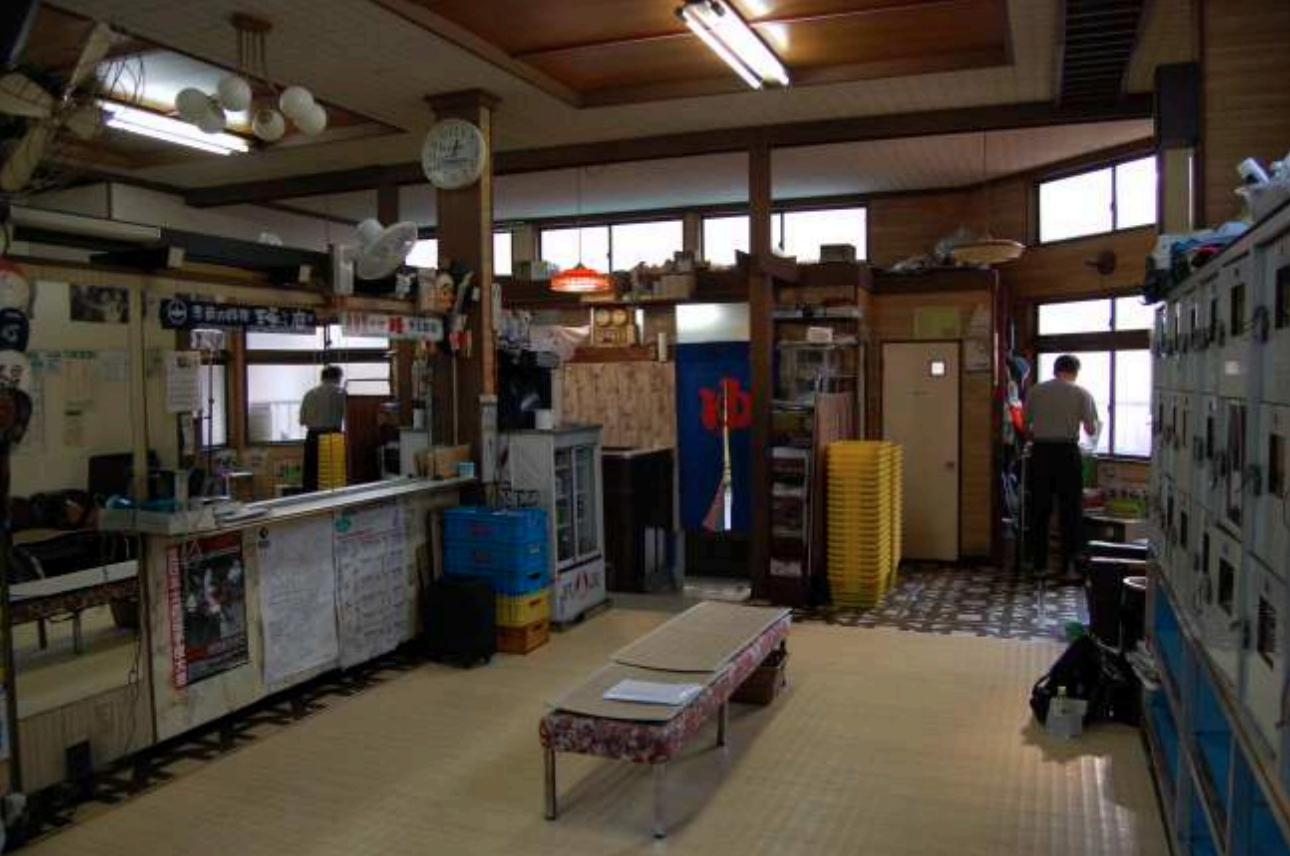
2022.1.18
“Public Baths and Public Cafeterias”
Mr. Tatsushi Fujihara, Historian
During my four years as an undergraduate, I lived in a boarding house in the Kitashirakawa area of Sakyo-ku in Kyoto. It had a shared kitchen and toilets, but no bath. To wash up, I could either bike two minutes or walk five minutes to the nearest public bathhouse. Whether it was the middle of winter, middle of summer, or a rainy day, I took my baths at Takahara Onsen, which has been gone for ages.
That bathhouse was a fascinating place. First I’d take off all my clothes, not caring one bit that the manager was sitting by the door, and lock them in my locker, while another student checked out his muscles in the mirror, before carrying my shampoo, conditioner, soap and washcloth in my basin to the bathing area. In the tiled room churning with white steam, I soaped up, showered off, soaked in the lukewarm herbal bath for a moment, then dipped into the main tub, which was so hot that it turned your skin red. If I was tired, I would head into the sauna first. In summer, I might dunk into the cold bath afterwards.
What’s fascinating about a bathhouse is that everyone is naked, in a public space. Two older guys chatting in the corner. A couple of beefy athletic types kicking back together in the bathtub, talking about the day’s practice. Now and then a couple yelling to each other over the median wall, sounding almost like they’re fighting. There was a TV mounted high enough that you could see it from both sides. It was always playing a live broadcast of the baseball game, and always the Hanshin Tigers, the old timers offering a few choice words for the pitchers and the fielders. When Hanshin won, the baths brimmed with excitement. If a Hanshin player messed up during a tight game, everybody in the baths would heave a sigh (I’ll confess, I’m a Hanshin fan as well). Steam and warming up the body seem to promote conversation. At university I was a member of the soft tennis club, and on days when all of us went to the bathhouse after practice to relax, the conversation flowed so easily.
But there was more than conversation to be had. There were also things to read, like newspapers, magazines, and manga. As a result, I didn’t have to spend that much on reading material. In grandiose terms, the bathhouse was our local information station.
On months when I had a little extra cash, I bought something to drink. My favorite was the coffee milk, which you got from a cooler at the front. Boy, it was delicious.
Another fascinating aspect is that nobody ever stuck around after getting dressed. So long as you were naked or half-naked, you could stay put for hours, but the second you were clothed, you felt a little out of place. The bathhouse near the place where I live now has a shared lounge, separate from the changing areas, where men and women can meet up. It’s a nice place to flip through a magazine for a bit after you’ve dressed. Though sometimes, I can’t help but wishing for a place where you could eat something and have a beer in that languid state that you fall into after a long bath. Today there are a lot of nicer spas around, but they tend to be a little bigger than what I have in mind.
These experiences from my college years were one of the main things that prompted me in my book Eating in Proximity (Mishimasha) to explore the possibilities of a public bathhouse with a cafeteria element. A place you can relax, without a need to socialize, once you’ve taken off your clothes. I’m imagining a public space that doesn’t have to worry about turnover, where you can have a meal, or have a drink, or have a conversation, or read some comics and chill out. In today’s world, where relaxation has been increasingly relegated to the home, we need more spaces like this. You might feel a little lonely once you’re back at your tiny apartment, but you’ll go to bed with the energy to face the day tomorrow.
Translated by Sam Bett
